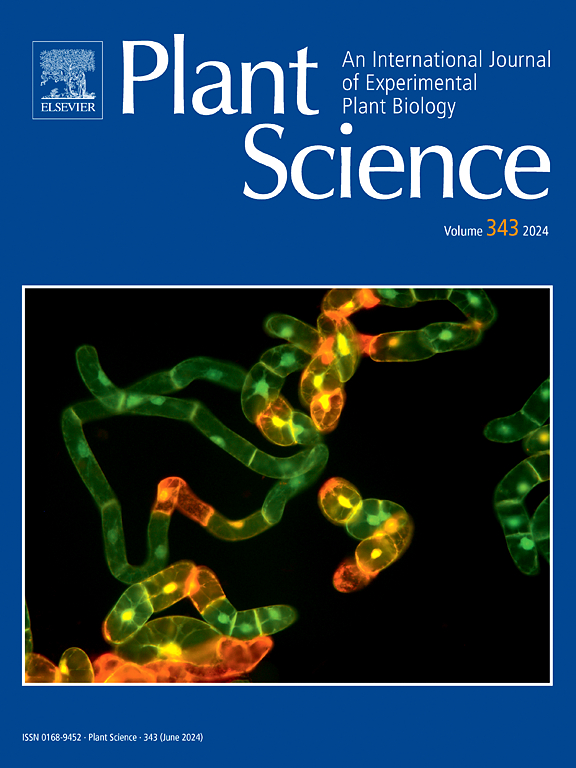Genome-wide identification and analysis of autophagy-related (ATG) genes in Lycium ruthenicum Murray reveals their crucial roles in salt stress tolerance
IF 4.2
2区 生物学
Q2 BIOCHEMISTRY & MOLECULAR BIOLOGY
引用次数: 0
Abstract
Autophagy is a highly conserved intracellular degradation system that is crucial for nutrient recycling, thus regulating plant growth and development as well as in response to various stresses. Halophytic plant Lycium ruthenicum Murray (L. ruthenicum) is considered as a potential model plant for studying the physiological mechanisms of salt stress tolerance in plants. Although the genome sequence of L. ruthenicum is available, the characteristics and functions of the salt stress-related genes remain largely unknown. In the present study, a total of 36 AuTophaGy-related (ATG) genes were identified in L. ruthenicum and detailed characteristics of them were given. Quantitative real-time polymerase chain reaction analysis revealed that the expression of 25 LrATGs was significantly upregulated after salt stress treatments. Furthermore, the autophagic marker line pSuper:GFP-LrATG8g was generated and used to demonstrate the salt stress-induced autophagy, as revealed by measuring autophagic flux and observing autophagosome formation. The pSuper:LrATG5-GFP overexpression (OE) lines were also generated and further phenotypic analysis showed that OE-LrATG8g and OE-LrATG5 plants exhibited better salt tolerance than that of WT plants. To the best of our knowledge, this study firstly reports a detailed overview of LrATGs-mediated autophagy in L. ruthenicum response to salt stress. These findings contribute to a global understanding of the characteristics of ATG genes in L. ruthenicum and lay a foundation for future functional study.
枸杞自噬相关基因(ATGs)的全基因组鉴定和分析揭示了它们在盐胁迫耐受中的重要作用。
自噬是一种高度保守的细胞内降解系统,对养分循环至关重要,从而调节植物的生长发育以及对各种胁迫的反应。盐生植物枸杞(L. ruthenicum)被认为是研究植物耐盐生理机制的潜在模式植物。虽然已知盐胁迫相关基因的基因组序列,但对盐胁迫相关基因的特征和功能仍知之甚少。本研究共鉴定了36个自噬相关基因(LrATGs),并给出了它们的详细特征。定量实时聚合酶链反应分析显示,盐胁迫处理后,25个LrATGs的表达显著上调。通过测定自噬通量和观察自噬体的形成,制备了自噬标记系pSuper:GFP-LrATG8g,用于证明盐胁迫诱导的自噬。进一步的表型分析表明,OE- lratg8g和OE- lratg5植株的耐盐性优于WT植株。据我们所知,本研究首次报道了lratgs介导的自噬在L. ruthenicum对盐胁迫的反应中的详细概述。这些发现有助于全面了解白乳草ATG基因的特征,为今后的功能研究奠定基础。
本文章由计算机程序翻译,如有差异,请以英文原文为准。
求助全文
约1分钟内获得全文
求助全文
来源期刊

Plant Science
生物-生化与分子生物学
CiteScore
9.10
自引率
1.90%
发文量
322
审稿时长
33 days
期刊介绍:
Plant Science will publish in the minimum of time, research manuscripts as well as commissioned reviews and commentaries recommended by its referees in all areas of experimental plant biology with emphasis in the broad areas of genomics, proteomics, biochemistry (including enzymology), physiology, cell biology, development, genetics, functional plant breeding, systems biology and the interaction of plants with the environment.
Manuscripts for full consideration should be written concisely and essentially as a final report. The main criterion for publication is that the manuscript must contain original and significant insights that lead to a better understanding of fundamental plant biology. Papers centering on plant cell culture should be of interest to a wide audience and methods employed result in a substantial improvement over existing established techniques and approaches. Methods papers are welcome only when the technique(s) described is novel or provides a major advancement of established protocols.
 求助内容:
求助内容: 应助结果提醒方式:
应助结果提醒方式:


